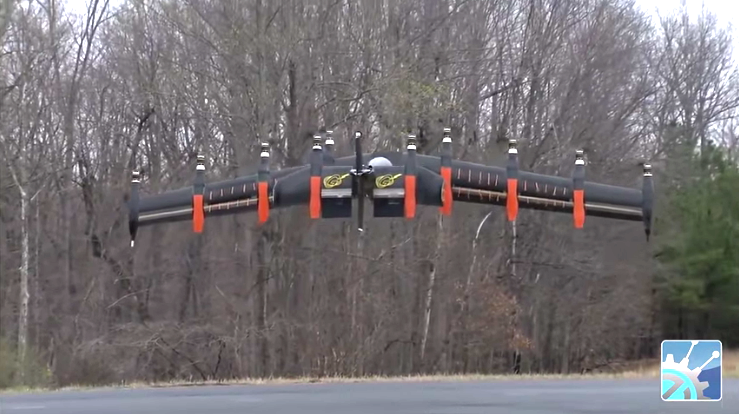After over 300 trips around the 13.629 kilometer (8.47 mile) circuit, Porsche edged out Toyota for the overall win in the last three minutes of the 24 Hours of Le Mans. A breakdown left the leading #5 TS050 hybrid stranded on the track with the Porsche #2 919 hybrid speeding past for the overall win. Toyota and Porsche had battled it out for the entire race, with Audi struggling with a blown turbocharger and broken suspension. That Audi’s technicians’ and mechanics could repair significant mechanical issues and have their cars complete the race within striking distance of a podium finish speaks volumes for their skills. As usual for several years, Toyota, Porsche and Audi ran hybrid cars in the LMP1 (Le Mans Prototype 1) category, which allows either hybrid or non-hybrid power. Hybrid cars have no limit on engine size and non-hybrids are limited to 5.5 liters (340 cubic inches. Because of the speeds they can attain, LMP1 vehicles must …
Hybrid Happening Follow-up, Followed by Not-So-Wild Speculation
Richard Glassock, the blog’s unofficial hybrid power reporter, sent the link to this video about the NASA GL-10 Greased Lightning test vehicle – which combines hybrid power with vertical take-off and landing abilities. It’s a more detailed look at the power system and flight characteristics of this aircraft. The Graupner model airplane people obviously know a good thing when they see it, as reported here by the TestFlite gang – a group of enthusiastic model builders and flyers with a try it on and see if it fits attitude. They excel in action-packed aerial photography that would make Michael Bay jealous. Their test subject flies like a GL-10 or Joe Ben Bevirt’s S2s, and looks a great deal like an Oliver Garrow design. Graupner’s price seems reasonable for a model craft that emulates what NASA doubtless spent much more on perfecting. It manages to perform the same kind of VTOL performance with very smooth transitions to forward flight. The software, …
An Off-the-Shelf Hybrid Power Package
Dr. Andrew Frank of the University of California at Davis and Greg Stevenson of GSE, Inc. discussed Efficient Drive Trains at the fourth annual Electric Aircraft Symposium on April 23, 2010. Their detailed look at a 75-kilogram (165 pound), 36 kilowatt (48 horsepower) power system for a high-performance sailplane gave attendees a clear look at what can be accomplished with off-the-shelf components, especially if the shelf is in either presenter’s warehouse. Dr. Frank, teaching and mentoring in the University’s Mechanical and Aeronautical Engineering Department, has been dubbed the father of the plug-in hybrid vehicle (PHEV), and has fielded winning teams for the Shell Eco-Marathon, with lightweight cars that obtained up to 3,500 miles per gallon. The base two-horsepower Briggs and Stratton engine is modified with fuel injection and a higher compression piston, and the 150-pound, supine driver accelerates the pencil-thin vehicle to 21 miles per hour and allows the car to coast down to 11 mph before accelerating again, to achieve an average of …
From Formula 1 to Your Airplane?
Imagine a high-energy system that could be dropped in your car for $1,600, give it a 30-percent boost in mileage (and a simultaneous reduction in its carbon footprint), and added pep off the line. Imagine that this was developed by two of the leaders in Formula 1 racecar development. You might be interested. Ricardo, a long-time developer of racing engine refinements, and Williams, oft-time winning chassis builder, are collaborating on just such a setup. Kinetic Energy Recovery Systems (KERS), developed originally for the 2009 Formula 1 racing season, used flywheels, batteries, and stunningly powerful electric motors (60 kW – 81 horsepower from four to eight kilogram cylinders) to augment the internal-combustion engines motivating the racers. The systems were controversial and eventually scrapped by all racers. Teething problems in the first year of racing led to the barring of KERS in the 2010 season. Applying these components to a roadable supercar, Porsche is introducing its GTR3 Hybrid at the upcoming Geneva Motor …
Eco-Marathon an Echo of the Green Flight Challenge
Think of the Green Flight Challenge flown on a much smaller course, but allowing hydrogen fuel cell powered balloons to compete against liquified natural gas powered ultralight aircraft, or solar-powered autogyros. You might get a small idea of the creativity and innovation that sponsors hope to unleash in an upcoming event. In the town of Vichy, France, at the Vichy-Charmiel airfield, on July 9-11, the Eco Marathon ULM (Ultra Light Machines) will be held to test the limits of how little energy can be used to fly an aerial craft around a closed-circuit course three times. The rules are simple. The craft using the least energy wins – like the CAFE Foundation’s 2011 Green Flight Challenge, and inspired by the Shell Marathons for high school students who build extreme vehicles that get extreme mileage. There are no speed or weight requirements outside those imposed by the French Civil Aircraft Authority (the DGAC) on the various types of aircraft. Since participants …

